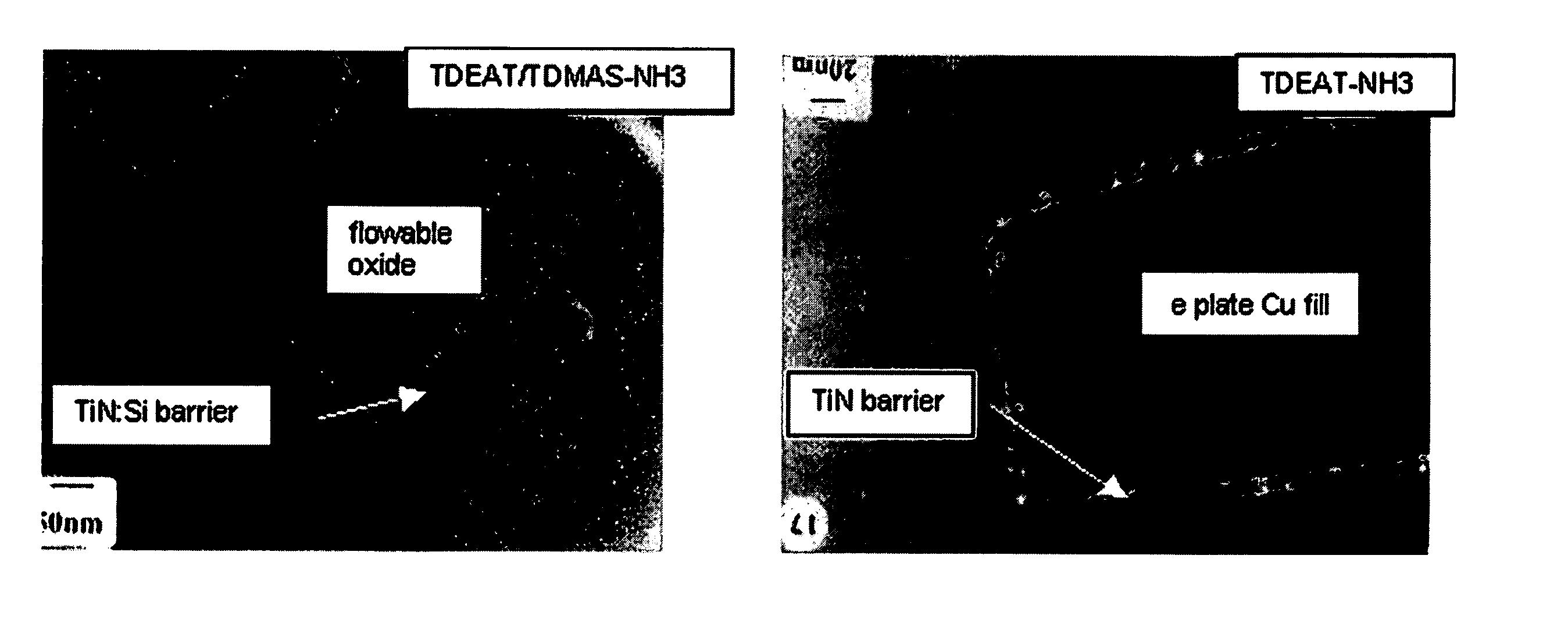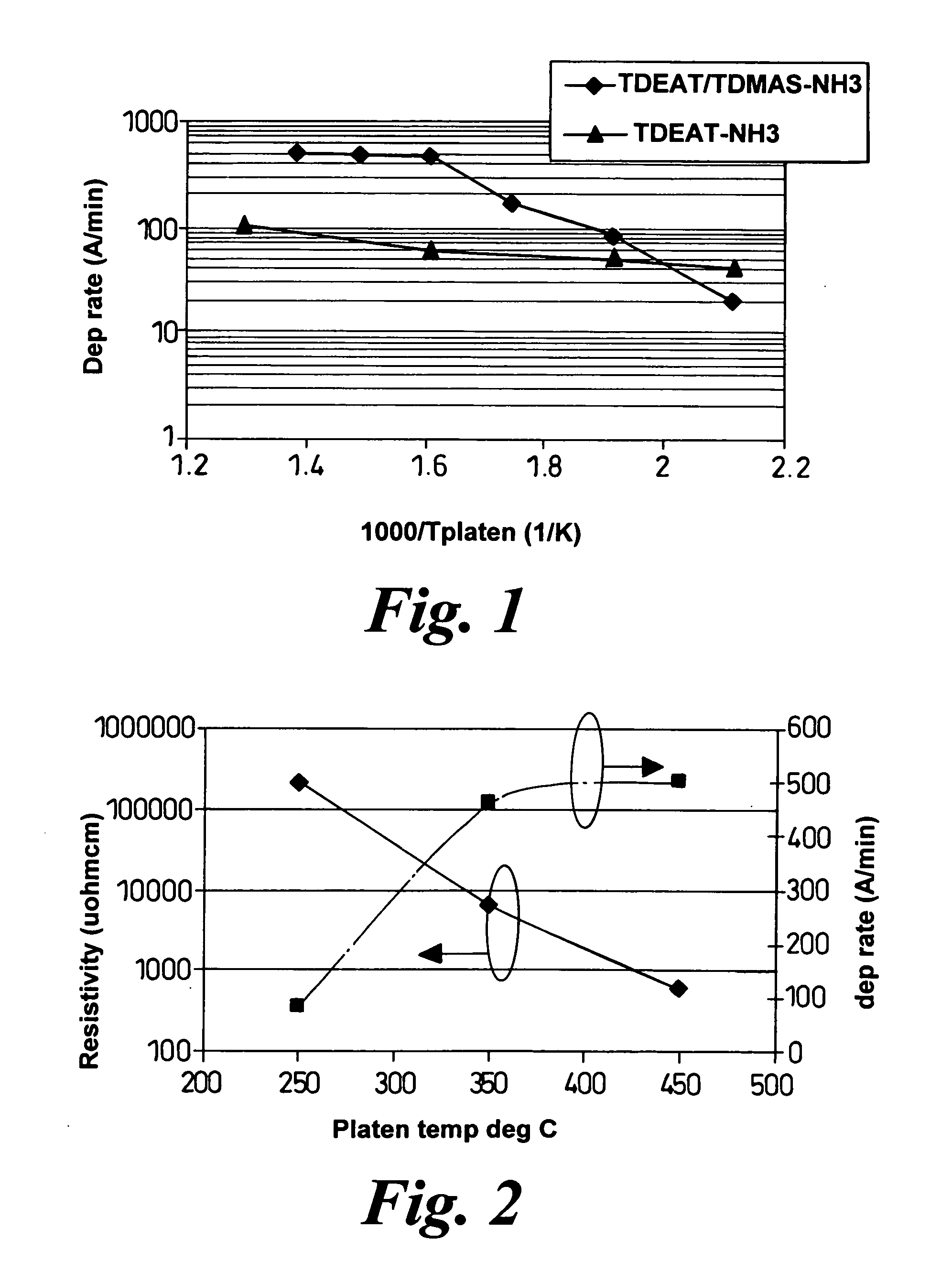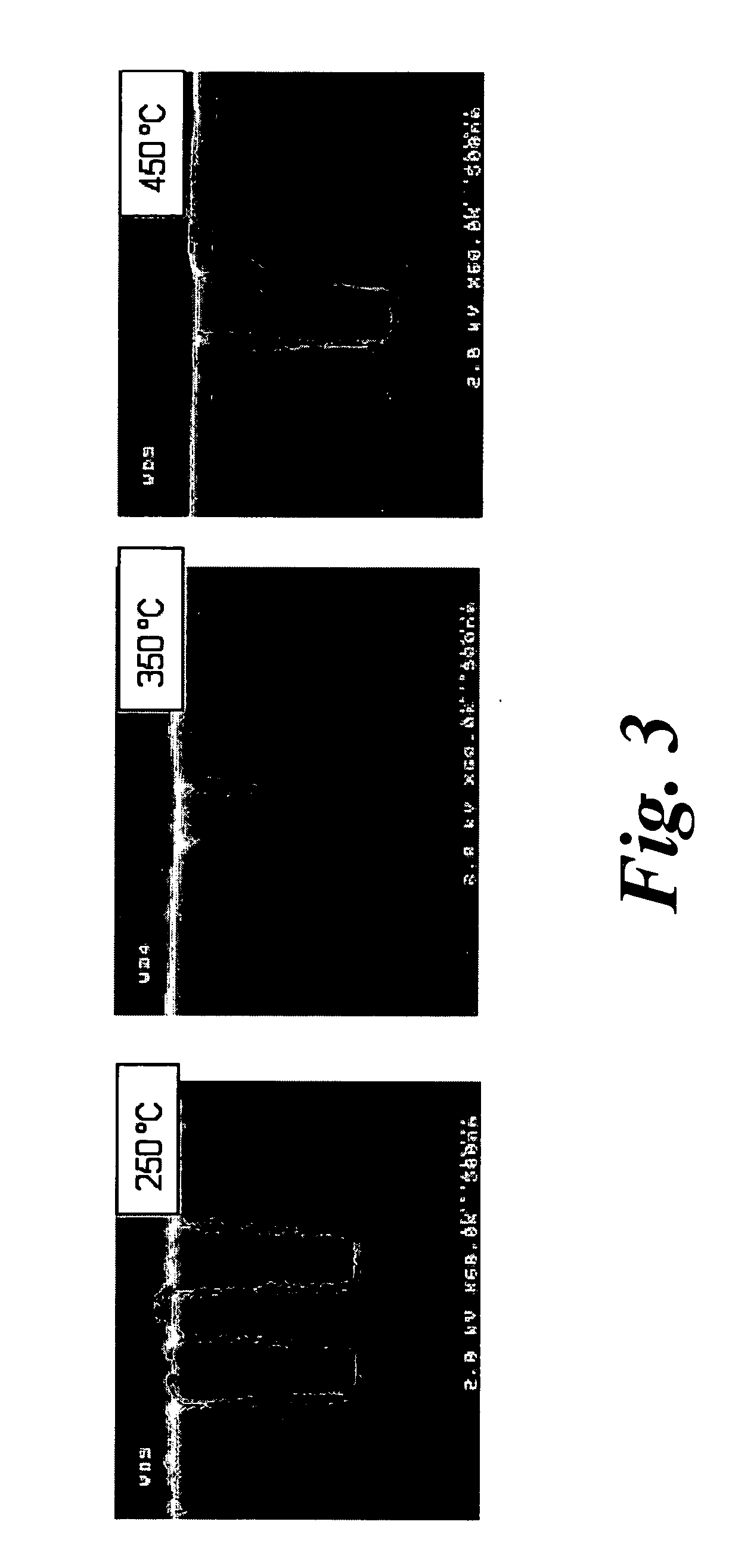Amorphus TiN
a technology of amorphous tin and amorphous tin, applied in the field of barrier layers, can solve the problems of low deposition rate, high resistivity materials, and difficulty in meeting the challenge of producing a robust low resistivity barrier to cu diffusion
- Summary
- Abstract
- Description
- Claims
- Application Information
AI Technical Summary
Benefits of technology
Problems solved by technology
Method used
Image
Examples
Embodiment Construction
[0028] The MOCVD reactor used for the work here is a based on a Trikon Technologies Planar 200 CVD chamber. Reactants are introduced via a dual port (duplex) showerhead of 20 cm diameter at about 25 mm above the wafer surface. The duplex showerhead design allows separate and uniform introduction of the reacting species (modified metal organic precursor and NH3 in this case) across the wafer surface, thus minimising any premixing and preventing any undesirable reactions within the showerhead itself. The shower head is also RF driven at 13.56 MHz allowing diode discharges to be set up between the wafer surface and showerhead. The load locked reactor is fitted with a variable temperature (room temperature to 650° C.) 200 mm platen on which the substrate rests.
[0029] The TDEAT TDMAS precursor mix with silicon to titanium ratio of 10:90 at % was obtained from Epichem Ltd and the TDEAT from Schumacher. Due the low vapour pressure of the precursors (TDEAT Vp=0.2 Torr at 90° C.) and the re...
PUM
| Property | Measurement | Unit |
|---|---|---|
| thickness | aaaaa | aaaaa |
| chamber pressure | aaaaa | aaaaa |
| chamber pressure | aaaaa | aaaaa |
Abstract
Description
Claims
Application Information
 Login to View More
Login to View More - R&D Engineer
- R&D Manager
- IP Professional
- Industry Leading Data Capabilities
- Powerful AI technology
- Patent DNA Extraction
Browse by: Latest US Patents, China's latest patents, Technical Efficacy Thesaurus, Application Domain, Technology Topic, Popular Technical Reports.
© 2024 PatSnap. All rights reserved.Legal|Privacy policy|Modern Slavery Act Transparency Statement|Sitemap|About US| Contact US: help@patsnap.com










